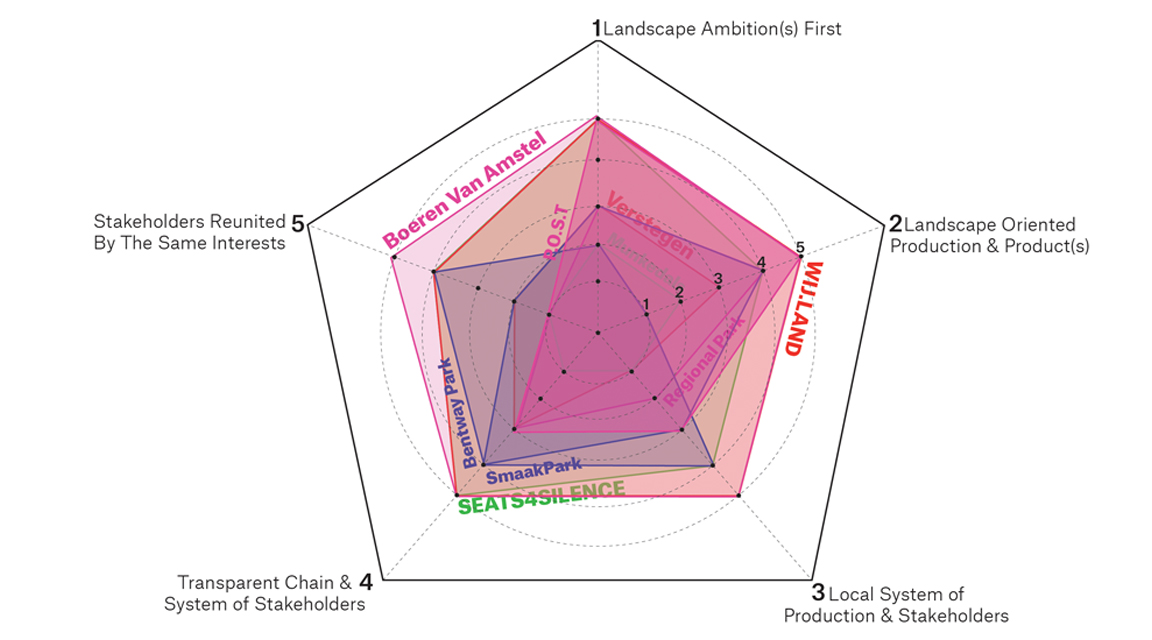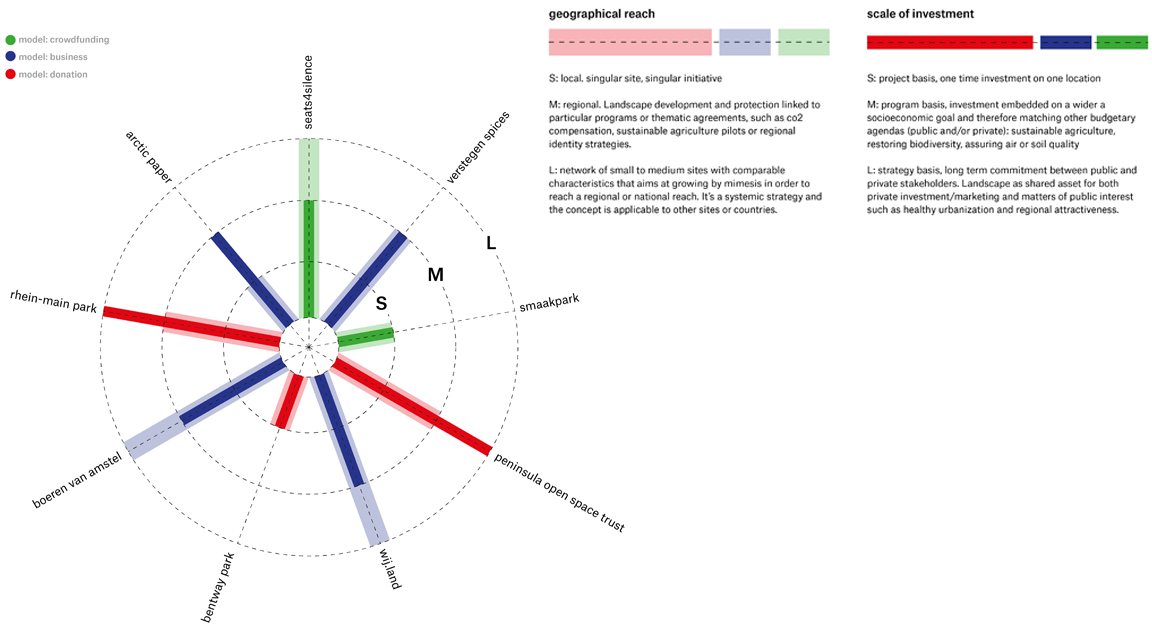Landvestors
Non-government landscape investment
Increasingly, governments come to the conclusion they cannot bear the financial burden by themselves. At the same time, private landscape initiatives by companies and citizen collectives are mushrooming in many places. Welcome to the age of Landvestors.
Phase 1 – Learning from best practices
We’re in at time of growing interests and ambitions regarding the Dutch landscape, also when it comes to Dutch politics and planning. In addition to vision and design, these ambitions require funds. Investing in the landscape is high on the agenda because of climate change, preservation of cultural history and the stimulation of healthy living and a good economic establishment climate.
Dutch landscape initiatives, public or private, can learn from each other’s financing practice as well as from good examples in other countries. Despite the tradition of privately funded estates in the 17th century, the Netherlands is not very experienced when it comes to contemporary ways of private financing of landscape. Sharing landscape experience has been the motivation for our program ‘Landschap als Vestigingsvoorwaarde’, including publications such as Blind Spot, a lively Community of Practice (CoP) and events such as the Landscape Triennial.
“In the Netherlands, everyone expects two things to be always free of charge: the weather and the landscape.” – Nicole Hoven, Vereniging Natuurmonumenten (in Spot On, 2017)
Donation, crowdfunding or business model
With financial support by the Creative Industries Fund, the Landvestors project realized a quickscan of emerging forms of non-government landscape financing. To promote crossovers between spatial/landscape design and the economic and financial disciplines, we illustrate lessons learned from foreign and Dutch practices, and discuss these with landscape and financial professionals. Which forms of financing are revelant for the Dutch context? How do the funding mechanisms work and how can Dutch stakeholders start to use them? And how does our relationship with the landscape change, when we pay for it privately instead of collectively?
The 12 practices are divided in the categories donation, crowdfunding and business model. On July 16th 2020, we organized an Landvestors expert meeting, with keynote speaker Kjell Schmidt of the Regionalpark Rhein Main, among 30 other landscape and financial experts. Lessons learned and results of the expert meeting are combined in a compact handbook. Some of the conclusions:
- In different case studies from the Netherlands and abroad we found three recurring types of ‘landvestment’: donations, crowdfunding and business models. Each type has its potential and limitations, with regard to the feeling of ownership, attention for (non-monetary) value creation and the scalability of initiatives.
- In many cases, government subsidies still played an important role. Our experts therefore agreed that our best bet would be a combination of these three types of landvestment, together with existing and new forms of government spending. This financing mix can change along the timeline of a landscape development.
- To become an effective instrument in landscape development, landvestor projects would need to be scaled up to the scale of a landscape unit, often regional. In this project, the different regional private and public stakeholders would be most effectively organized. A long term commitment, of say 20 years, is regarded as a success factor too.
 Donation, Crowdfunding, Business model, Vereniging Deltametropool.
Donation, Crowdfunding, Business model, Vereniging Deltametropool.
Phase 2 – Landvestors in the region
The best practices from Landvestors phase 1 showed a great opportunity for company and citizen involvement in the landscape. regarding the international sharing of knowledge and experience on this emerging topic, and the interdisciplinary interaction of professionals in the landscape and financial disciplines. In phase 2, we continue our international and interdisciplinary way of working, and try to put it into practice on the regional scale. High-tech regions are For the Dutch Brainport and German Rhineland regions, we will sketch a regional landscape development strategy, focused on private stakeholders and backed by exploratory financing schemes involving donations, crowdfunding and business models. The strategy is based on existing landscape and regional development ambitions, and discussed with stakeholders during the process.
Both (post)industrial high-tech regions have the ambition to stimulate innovative industries in both regions require highly skilled (technical) personnel, which needs to be attracted and retained. This personnel is increasingly scarce and settles in regions with high levels of quality of life, and therefore landscape quality. Not by coincidence, this year’s Landscape Triennial is held in Noord-Brabant, with one of its living labs situated in the Brainport: ‘Hightech Highgreen’. The central idea behind this lab, organized by Brabants Landschap, Eindhoven and Oirschot, is that a flourishing high-tech region cannot do without a flourishing landscape.
“Money goes where money is! Public spending remains a key element in stimulating private spending on landscape, even when you try to get private contributions. Because landscape, as a public good, is expected to be a public Job.”
– Kjell Schmidt, director of Regionalpark Rhein Main





